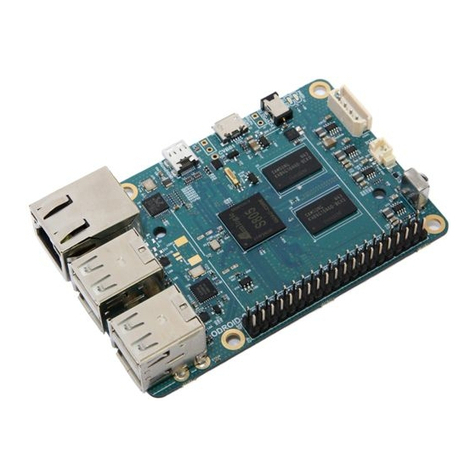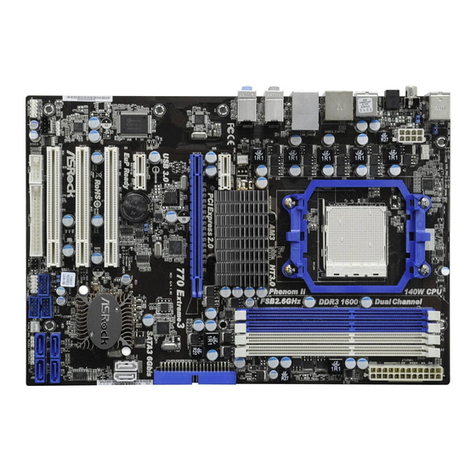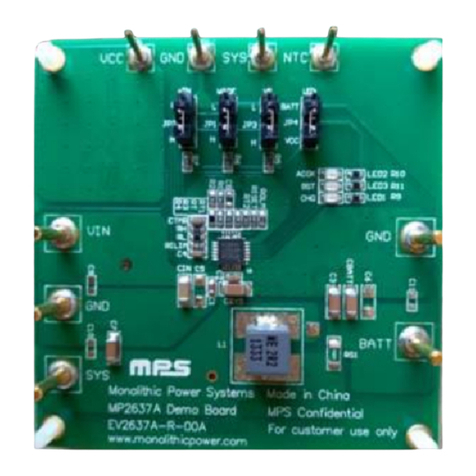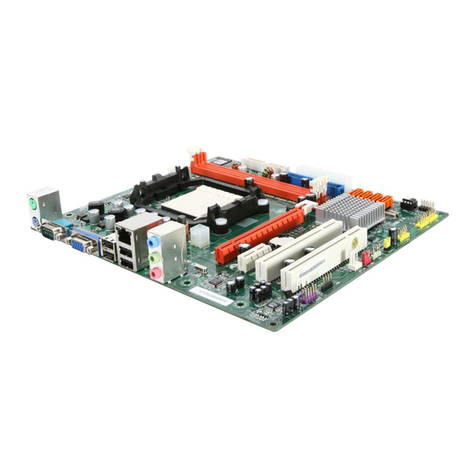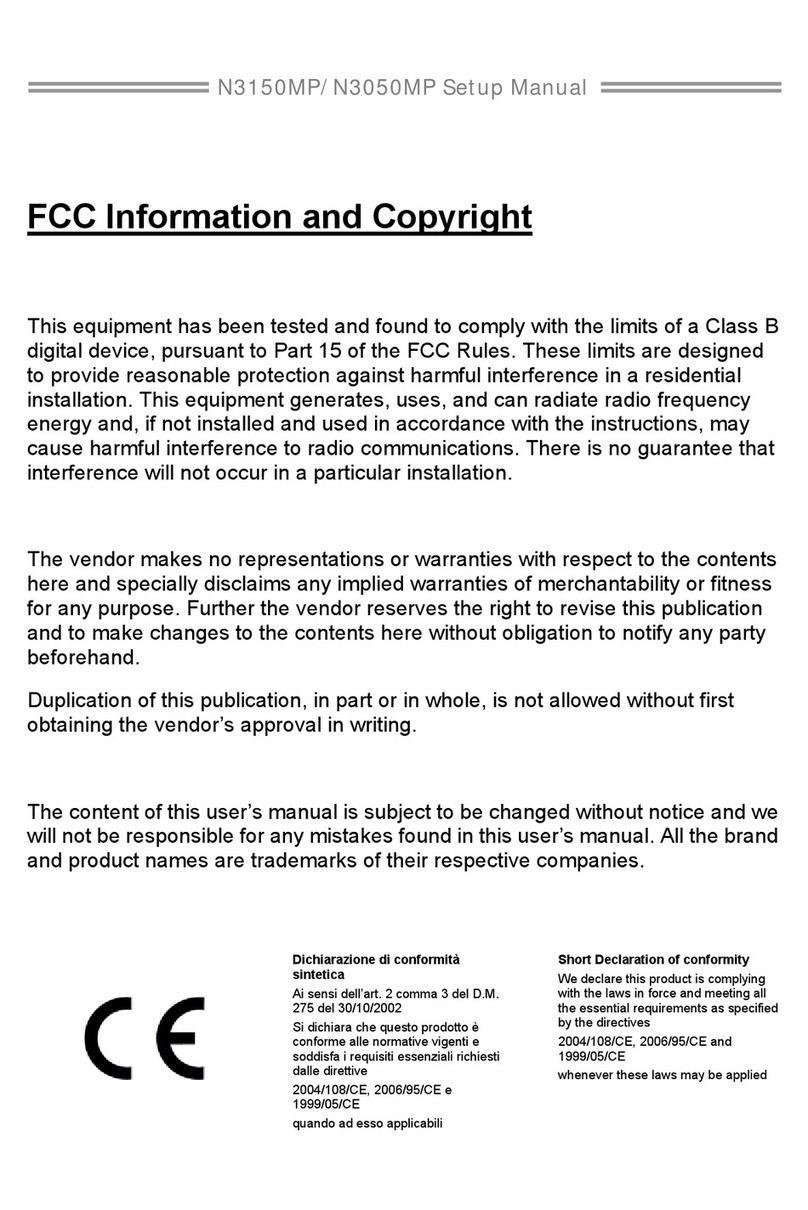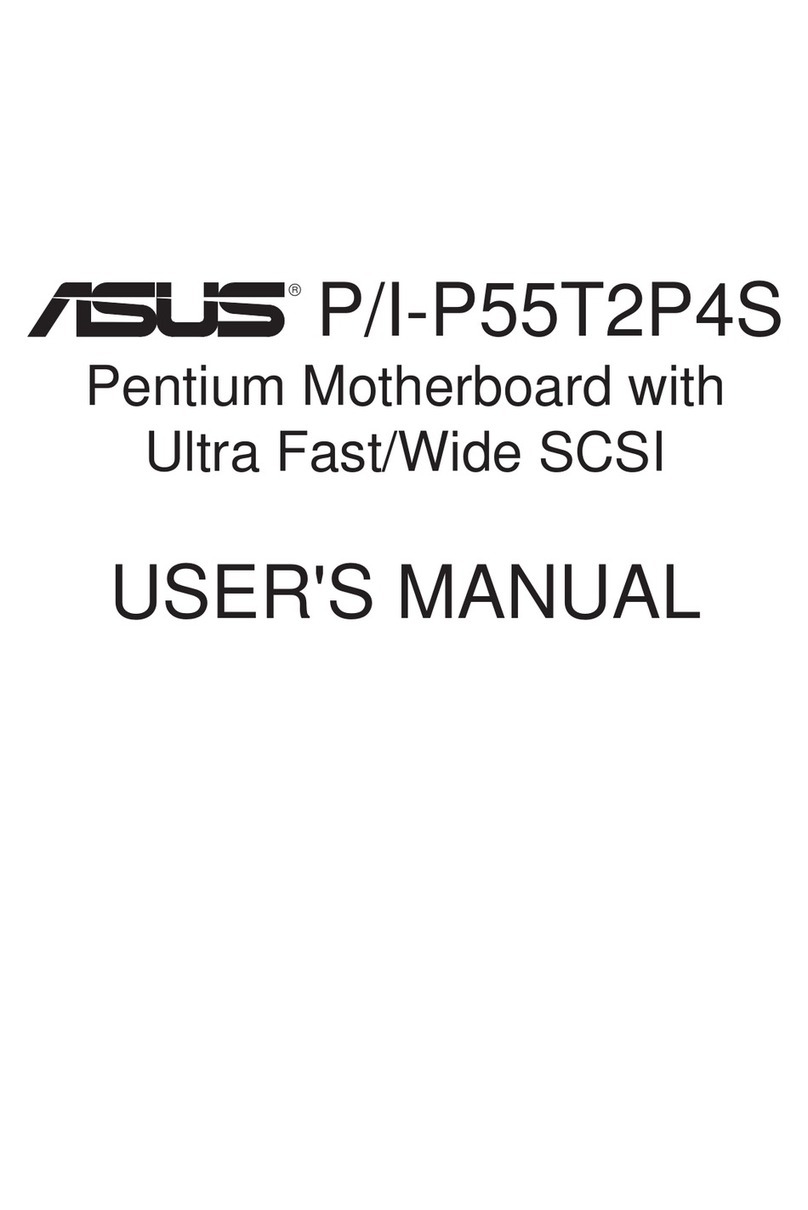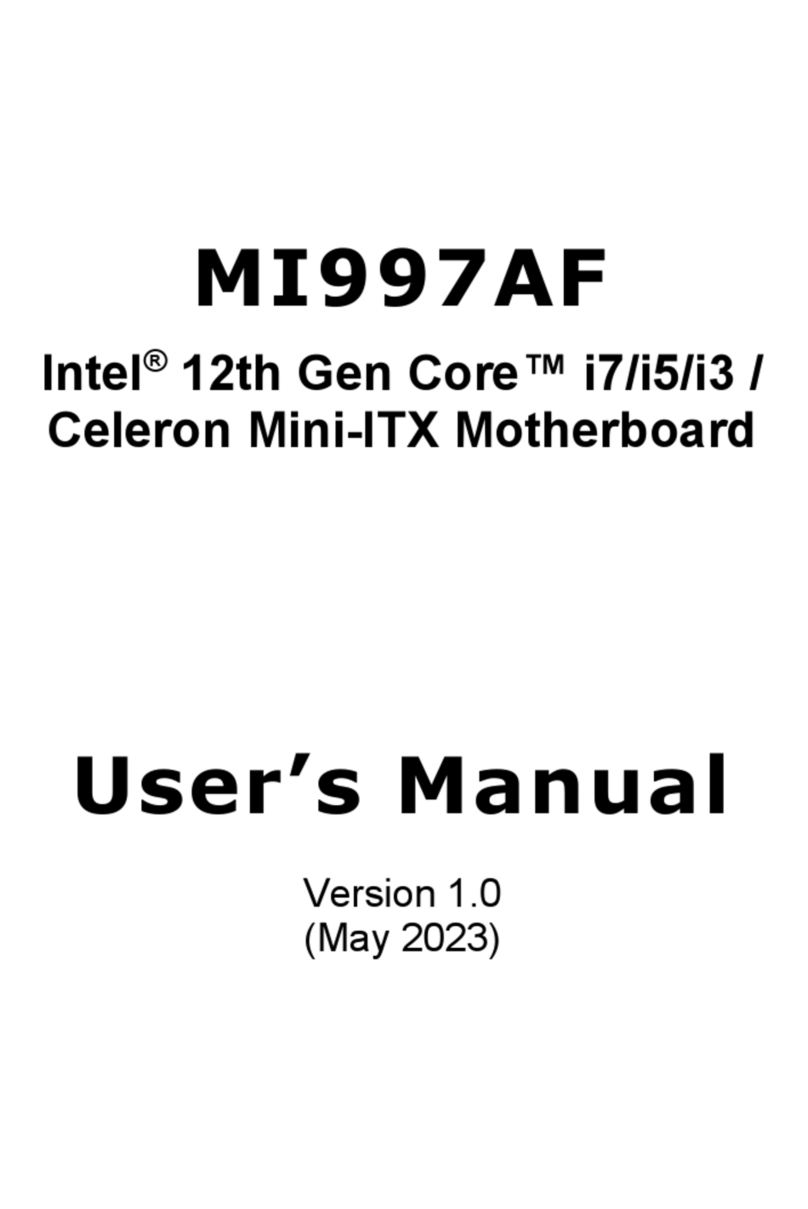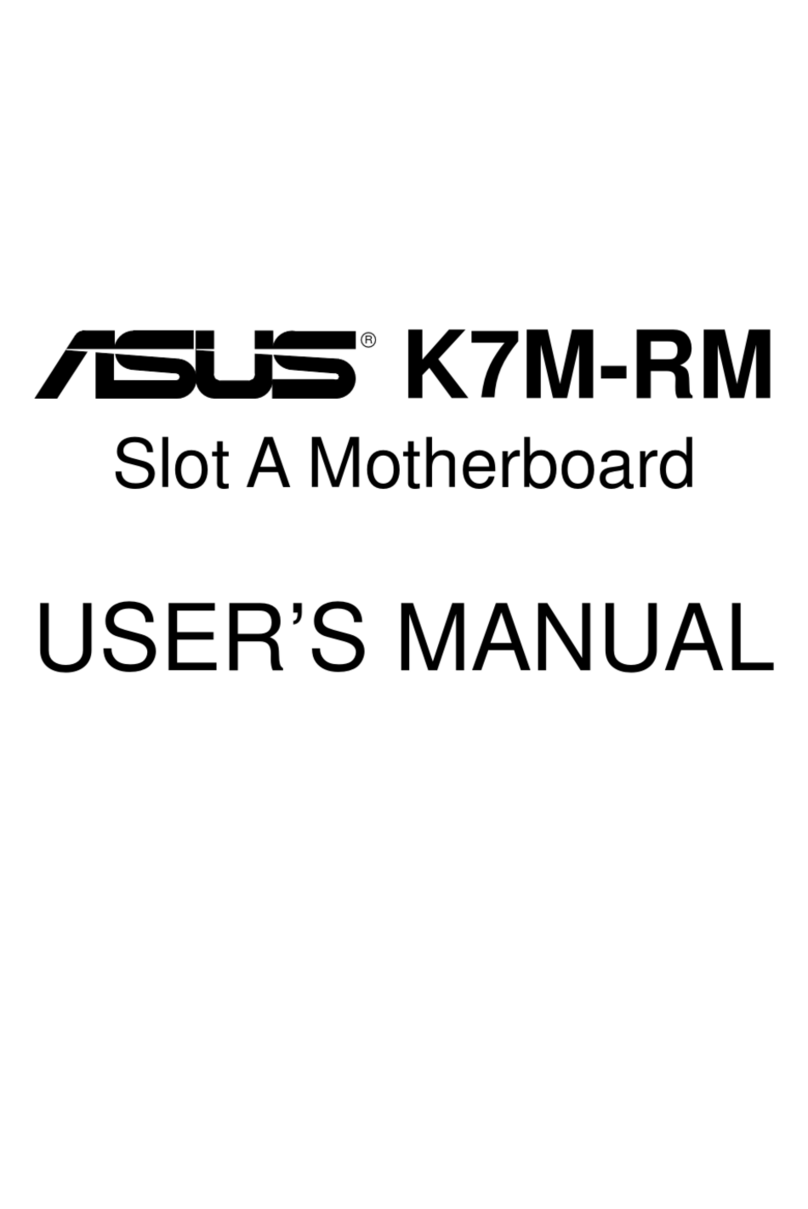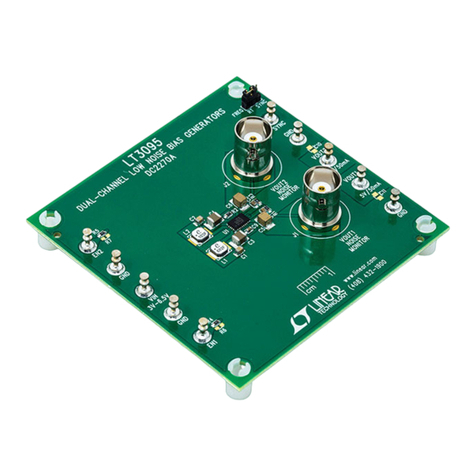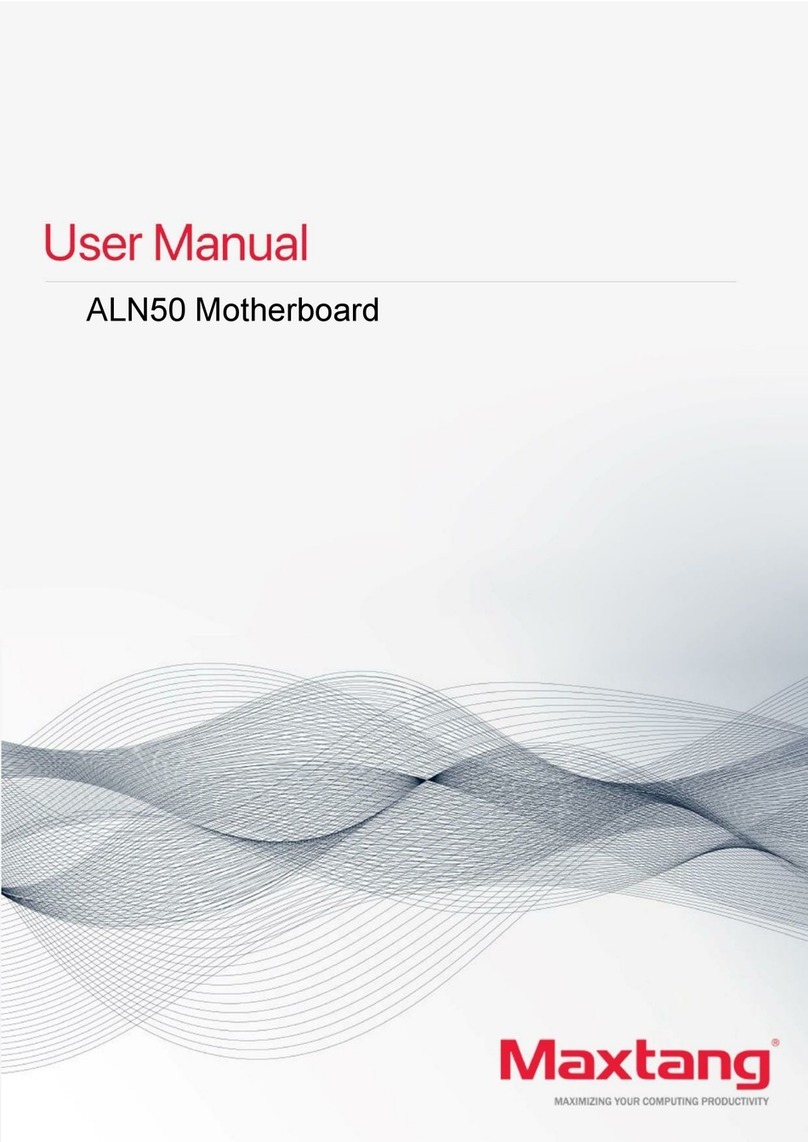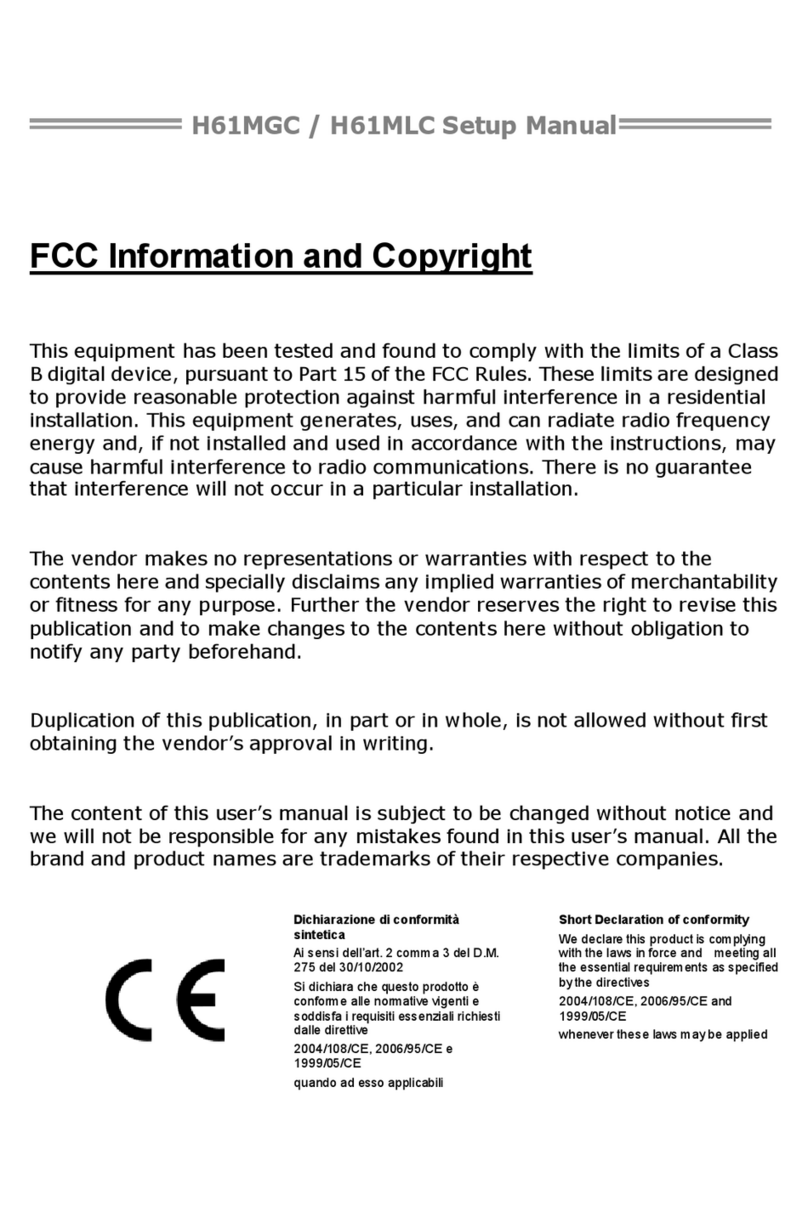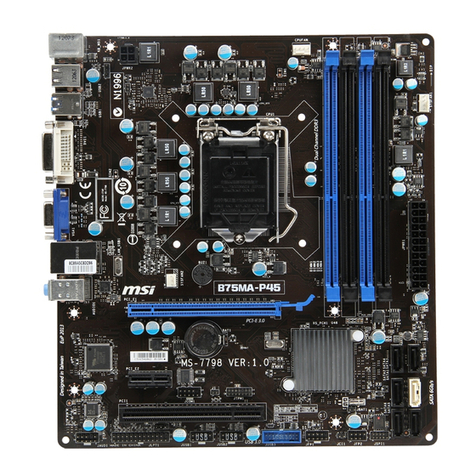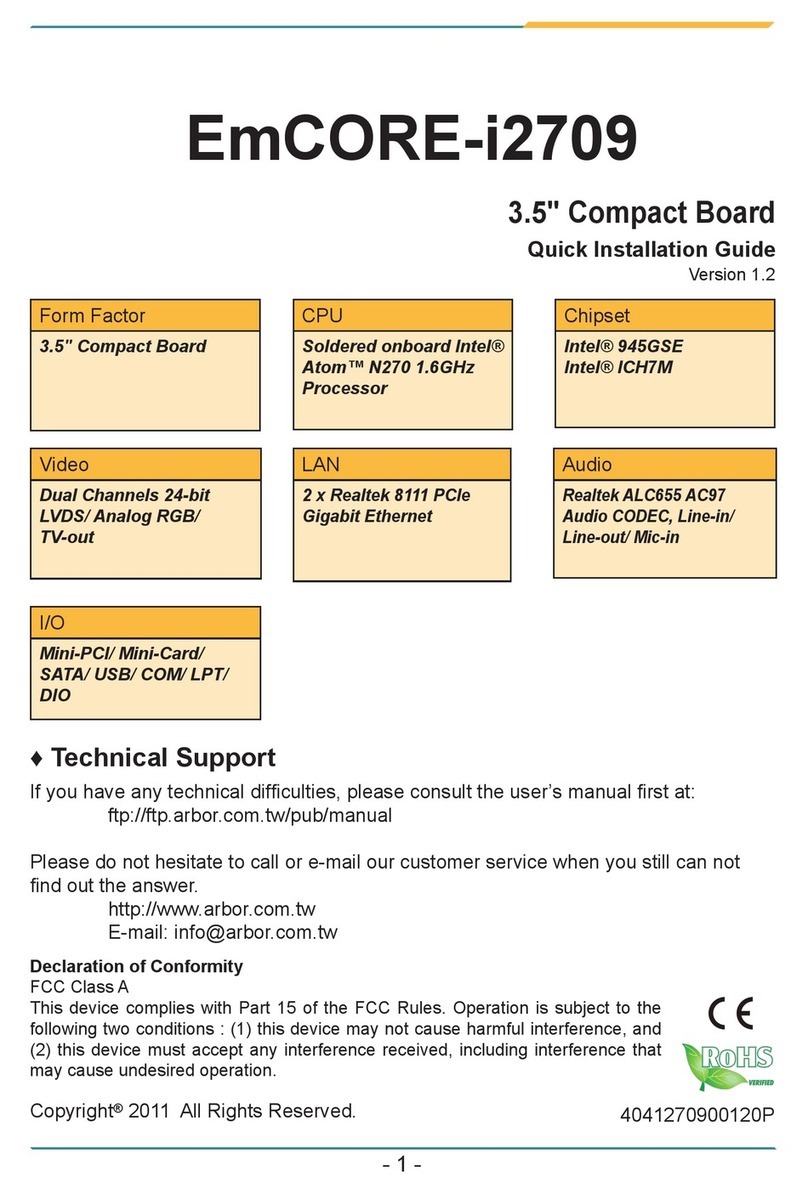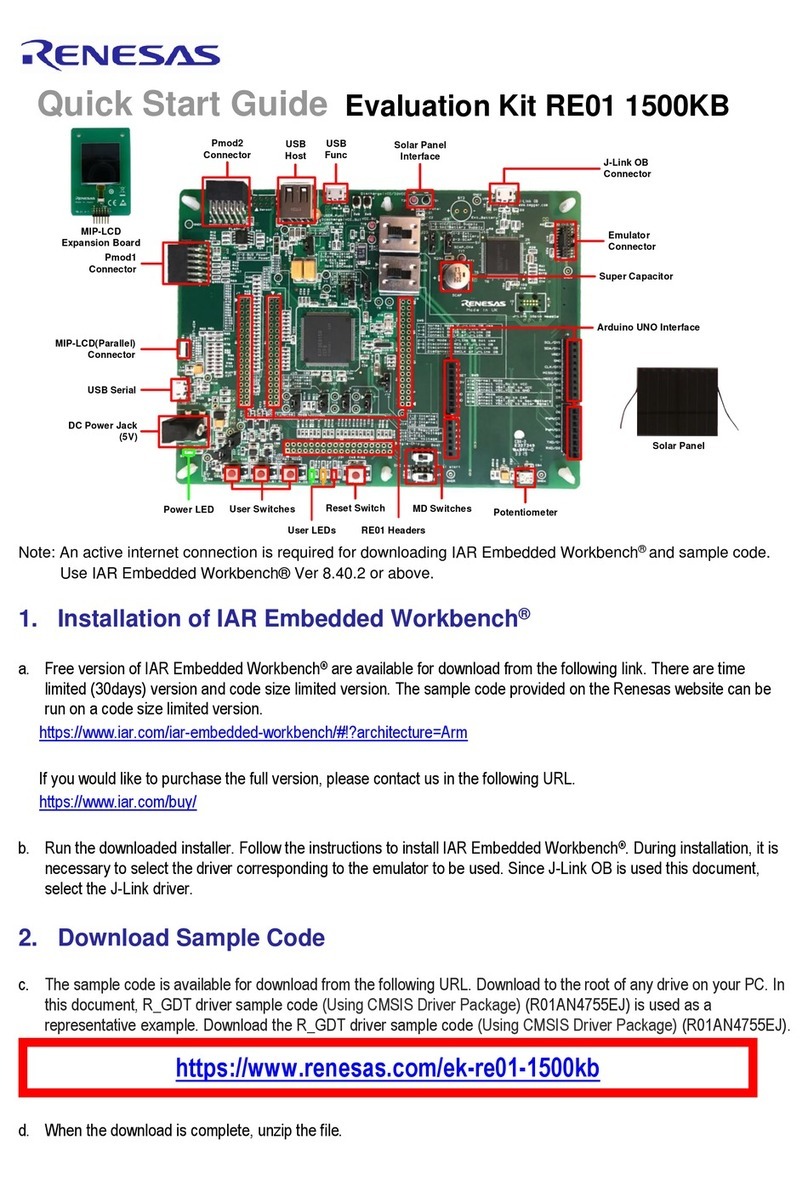HARDKERNEL ODROID-XU4 User manual

rev. 20170310
ODROID-XU4
USER MANUAL

Chapter 1 • Welcome.....................................................................................1
Differences between a typical PC and a Single Board Computer (SBC) ........2
Components Included on an SBC ...................................................................2
Block Diagram .................................................................................................3
Board Image....................................................................................................3
Power Supply ..................................................................................................4
Monitor.............................................................................................................5
Keyboard and Mouse ......................................................................................5
Ethernet and Wi.............................................................................................6
MicroSD Card..................................................................................................6
eMMC Module .................................................................................................7
LED Status ......................................................................................................7
Technical Specications ..................................................................................8
Heat Sink and Fan..........................................................................................10
Frequently Asked Questions...........................................................................11
Chapter 2 • Getting Started..........................................................................16
Home Computing Network .............................................................................16
Preparing the Work Area ................................................................................17
Flashing an Image..........................................................................................18
Boot Media .....................................................................................................18
Windows.........................................................................................................20
Linux...............................................................................................................24
OSX................................................................................................................25
Inserting the eMMC Module or SD Card ........................................................26
Powering Up...................................................................................................26
Troubleshooting..............................................................................................26
Conguring Linux............................................................................................28
Conguring Android........................................................................................29
Powering Down ..............................................................................................29
Chapter 3 • Operating Systems...................................................................30
Ubuntu/Debian................................................................................................30
Index ODROID-XU4
Beginner’s Guide

Booting Up .....................................................................................................30
Linux Basics ...................................................................................................31
Kernel .............................................................................................................32
Graphical User Interface (GUI).......................................................................32
720p vs 1080p................................................................................................32
Progressive vs Interlaced Video.....................................................................33
Video Downconversion...................................................................................33
Video Upconversion .......................................................................................34
HDMI Overscan..............................................................................................34
Command Line Interface ................................................................................36
Disk Partitions.................................................................................................36
Web Browsing ................................................................................................37
Kodi (formerly XBMC).....................................................................................37
Ofce and Productivity Applications ...............................................................38
Music and MIDI...............................................................................................38
How do I Add a MIDI Interface to the XU4?....................................................39
Experimental Music with the XU4...................................................................40
Android ...........................................................................................................40
Desktop Environment .....................................................................................40
ODROID Utility and Updater...........................................................................41
Setting the Display Resolution........................................................................41
Installing Google Play and Applications .........................................................41
Kodi ................................................................................................................42
Netix..............................................................................................................42
Gaming...........................................................................................................42
Music and MIDI...............................................................................................42
Using Bluetooth Devices with Android............................................................43
Adding an ODROID-VU Touchscreen ............................................................43
Chapter 4 • Hardware Tinkering ..................................................................44
USB UART .....................................................................................................45
Bluetooth Module............................................................................................52
ODUINO ONE ................................................................................................55
Index ODROID-XU4
Beginner’s Guide

ODROID-SHOW2...........................................................................................56
Weather Board ...............................................................................................58
USB Audio Adapter.........................................................................................59
USB-SPDIF ....................................................................................................61
USB-CAM 720p..............................................................................................62
USB3/SATA3 HDD/SDD Interface Kit and SATA Bridge Board ......................63
USB3/SATA3 HDD/SSD RAID0/1 Enclosure .................................................66
USB GPS Module...........................................................................................68
myAHRS+ Board ............................................................................................70
Cloudshell.......................................................................................................72
Expansion Board ............................................................................................75
Shifter Shield ..................................................................................................76
ODROID-VU7.................................................................................................77
Micro USB-DC Power Bridge .........................................................................80
ODROID-VU5 ................................................................................................81
Heat Sink .......................................................................................................82
SmartPower2 .................................................................................................82
oCam .............................................................................................................83
WiFi Module ...................................................................................................86
Conclusion .....................................................................................................87
Additional Resources .....................................................................................87
Index ODROID-XU4
Beginner’s Guide

Credits
Authors: Rob Roy
Venkat Bommakanti
Art Editor: Bruno Doiche
Technical Editors: Tobias Schaaf
Saleem Almajed
What we stand for.
We strive to symbolize the edge of technology,
future, youth, humanity, and engineering.
Our philosophy is based on Developers.
And our efforts to keep close relationships with
developers around the world.
For that, you can always count on having the
quality and sophistication that is the hallmark of
our products.
Simple, modern and distinctive.
So you can have the best to accomplish
everything you can dream of.
© 2015 Hard Kernel, Ltd. • 704 Anyang K-Center, Gwanyang, Dongan, Anyang, Gyeonggi, South Korea, 431-815
Hardkernel manufactures the ODROID family of quad-core development boards and the world’s rst ARM big.LITTLE single
board computer.
Read our monthly magazine at http://magazine.odroid.com.
You can join the growing ODROID community with members from over 135 countries at http://forum.odroid.com.
Explore the new technologies offered by Hardkernel at http://www.hardkernel.com.

1ODROID-XU4 USER MANUAL
Congratulations on purchasing the ODROID-XU4! It is one of
the most powerful low-cost Single Board computers avail-
able, as well as being an extremely versatile device. Fea-
turing an octa-core Exynos 5422 big.LITTLE processor, advanced
Mali GPU, and Gigabit ethernet, it can function as a home theater
set-top box, a general purpose computer for web browsing, gam-
ing and socializing, a compact tool for college or ofce work, a pro-
totyping device for hardware tinkering, a controller for home auto-
mation, a workstation for software development, and much more.
Some of the modern operating systems that run on the
ODROID-XU4 are Ubuntu, Android, Fedora, ARCHLinux, Debian, and
OpenELEC, with thousands of free open-source software packages
available. The ODROID-XU4 is an ARM device, which is the most
widely used architecture for mobile devices and embedded 32-bit
computing.
Welcome

2ODROID-XU4 USER MANUAL
Differences between a typical PC and a
Single Board Computer (SBC)
If you are used to using a standard PC such as an OSX or
Windows machine, there are a few small differences to note when
transitioning to an ARM device. To begin with, the speed of an ARM
processor is not directly comparable to the speed of an Intel proces-
sor. Because of the efciency of the CPU, the XU4 can give great
response time that feels just as fast as using a more expensive com-
puter. The operating systems available for the XU4 are also highly
optimized, and benet from the expertise of many open-source con-
tributors that continually review each others’ work that bring daily
improvements to the OS.
In addition, nearly all of the applications available for the XU4
also have their source code publicly available, which means that
you can freely modify and update the applications to t your specic
needs. Program authors often maintain a GitHub repository, where
suggestions can be submitted, reviewed and distributed to all of the
application’s users.
The XU4 also uses Solid State technology for its storage me-
dia, although a conventional hard disk may be used as an auxiliary
device. The boot partition can be stored on either a microSD card or
the much faster eMMC module, and Hardkernel’s products have the
unique distinction of supporting removable eMMC modules, so that
operating systems may be switched out conveniently and easily. An
eMMC module is a type of storage typically used in a smart phone,
and is one of the more advanced compact media devices available.
The power consumption of a typical personal computer can
be anywhere between 100W and 1000W or more, depending on the
peripherals, processor and type of power supply used. However, the
ODROID-XU4 uses between 10W and 20W, greatly reducing your
electricity bills, as well as allowing unique power congurations such
as compact solar power cells and long-running batteries.
Components Included on an SBC
The ODROID-XU4 contains many of the same connections as
a typical computer, with 1 USB 2.0 port, 2 USB 3.0 ports, an Ether-
net port that supports Gigabit transfer speeds, an HDMI connector for
720p and 1080p monitors, and a 5V/4A DC power connector. In ad-
dition to these standard inputs, the XU4 also includes a 40-pin GPIO
port, an external RTC battery connector, a USB-UART serial console
port, an eMMC module connector, and a dedicated slot for a microSD
card. For more details, refer to the ODROID-XU4 introductory videos
at https://youtu.be/wtqfC9v0xB0 and https://youtu.be/lUchfyTpOjU.
Chapter 1

3ODROID-XU4 USER MANUAL
Block Diagram
The following diagram illustrates conceptually how the compo-
nents of the XU4 t together:
XU4 Block Diagram and Annotated Board Image
Chapter 1

4ODROID-XU4 USER MANUAL
Power Supply
The XU4 board requires a 5V/4A DC power source. The dedicat-
ed power connector (miniature barrel jack) can accept a DC plug cable
with a plug that has an outer diameter of 5.5mm and an inner diameter
of 2.1mm. The plug inner core (center) is positive (attached to the RED
wire in the cable) and outer cylinder is negative (attached to BLACK
wire in the cable). The XU4 can be powered using different options,
which are outlined below.
5V DC 4A Power Supply
Attach the plug to the power connector on the XU4. Plug the
2-pin PSU into the power outlet. The pins are Asian standard, and you
may need an adapter to use in your region, such as the Americas. The
PSU pictured above is available from Hardkernel.
DC plug cable
If you have a 5V DC 4A PSU which does not have the required
plug, you can cut off the plug from such a power supply. Expose about
½” of the red/black wires on the psu cable and attach them to the same
colored cables of this cable, then solder the joints. You can cover the
joint using electrical tape or a heat-shrink wrap. Attach the plug to the
XU4 and insert the PSU pins into a power outlet.
Chapter 1

5ODROID-XU4 USER MANUAL
This cable is also available from Hardkernel, and may be paired with
the SmartPower peripheral, which is an excellent bench power supply
with variable voltage.
Monitor
The XU4 offers an HDMI port for connecting an HDMI-com-
pliant monitor. It is recommended to use the Hardkernel supplied
HDMI cable, but many other high quality standard cables should
also work. There are some reported issues with cables that lack
HDMI grounding wires inside the cable, so it is best to order this
cable directly from Hardkernel or one of its certied distributors.
The image below shows the use of an ODROID-VU HDMI touch-
screen monitor supporting 10-point touch control.
ODROID-VU HDMI Monitor
Keyboard and Mouse
Nearly all USB HID-compliant keyboard and mouse will work
when connected to one of the four USB ports. The use of a bluetooth
mouse or keyboard requires a bluetooth dongle and, for rst pairing,
either an USB mouse/keyboard, an SSH access from remote or a
working touchscreen.
To pair a bluetooth keyboard or mouse via the Linux console, run
the following command in a Terminal window:
$ sudo hcitool scan
Push the Connect button on the bluetooth keyboard or mouse to
initiate a connection with the ODROID, and the following output should
appear in the console:
Chapter 1

6ODROID-XU4 USER MANUAL
Scanning ...
XX:XX:XX:XX:XX:XX Rapoo E6700
$ sudo bluez-simple-agent hci0 XX:XX:XX:XX:XX:XX
Push the Connect button again, and enter the shown pin on the
keyboard, followed by the Enter key. If no pin is shown, try 000000.
Then, type the following to trust the device and restart the bluetooth
service:
$ sudo bluez-test-device trusted XX:XX:XX:XX:XX:XX yes
$ sudo /etc/init.d/bluetooth restart
In Android, the Settings application may be used to connect to
the bluetooth keyboard or mouse. More details on using bluetooth
with Android are covered in Chapter 2.
Ethernet and WiFi
The Ethernet port accepts a standard Ethernet cable, and is ca-
pable of up to 1 GB (1000 MB) per second transmission rate. The WiFi
USB adapter ts in any of the 3 USB ports.
MicroSD Card
Align the metal strips of the microSD card with the pins of the mi-
croSD card connector, and slowly push it in until it clicks in place. Be
gentle. If you are unable to push it in, it may be misaligned. Recheck
and ip the microSD card if you notice a wrong insertion direction. The
image below shows a properly mounted microSD card.
XU4 closeup with microSD card attached
Chapter 1

7ODROID-XU4 USER MANUAL
eMMC Module
Align the eMMC module and the eMMC connector on the XU4
board, using the white rectangle on the PCB as a guide. The female
portion of the eMMC module should line up with the male connector
on the board. Slowly push it in until it clicks in place. Be gentle. If you
are unable to push it in, it may be misaligned. Recheck and turn the
eMMC module if you notice a wrong insertion direction. The writing on
the card will be exposed after insertion. The image below depicts how
the eMMC module appears after it is mounted.
XU4 closeup with eMMC module attached
LED status
The ODROID-XU4 includes several LED lights that indicate the
status of the device:
The red LED
• Is on when power is available
The blue LED
• Is on (solid light) when the bootloader is running
The blue LED
• Blinks slowly when the kernel is running, like a heartbeat
The blue LED
• Blinks quickly when the kernel is in panic mode
Chapter 1

8ODROID-XU4 USER MANUAL
Technical specications
Processor
Samsung Exynos5422 Cortex™-A15 2Ghz and Cortex™-A7 Octa
core CPUs with Mali Mali-T628 MP6 GPU
Storage
There are two different methods of storage for the operating sys-
tem. The rst is by using a microSD Card and another is by inserting
an eMMC module, which is normally used for storage for smartphones
and digital cameras.
eMMC 5.0 module socket
8GB/64GB : Toshiba
16GB/32GB : Sandisk iNAND Extreme
The eMMC storage access time is 2-3 times faster than the SD
card. You can purchase 4 size options: 8GB, 16GB, 32GB and 64GB.
Using an eMMC module will increase speed and responsiveness, sim-
ilar to the way in which upgrading to a Solid State Drive (SSD) in a
typical PC also improves performance over a mechanical hard drive
(HDD).
Micro Secure Digital (microSD) card slot
The ODROID-XU4 can utilize a newer UHS-1 SD model, which
is about twice as fast as a class 10 card. There are some microSD
cards which cause an additional boot delay time of around 30 sec-
onds. According to our testing, most Sandisk microSD cards don’t
cause a long boot delay. The ODROID-XU4 model is compatible with
a wide array of microSD cards, but class 10 cards or above are highly
recommended.
5V 4A DC input
The DC input is for 5V power input, with an inner diameter of
2.1mm, and an outer diameter of 5.5mm.
USB host ports
There is one USB 2.0 host port and two USB 3.0 ports. You can
plug a keyboard, mouse, WiFi adapter, storage or many other devic-
es into these ports. You can also charge your smartphone with it! If
you need more than 3 ports, you can use an external USB hub. A
self-powered hub will also reduce the power load on the main device.
Chapter 1

9ODROID-XU4 USER MANUAL
HDMI port
The XU4 model uses a standard Type-A HDMI connector.
Ethernet RJ-45 jack
The standard RJ45 Ethernet port for LAN connection supports
10/100/1000 Mbps speed. The green LED Flashes when there is 100
Mbps connectivity, and the yellow LED Flashes when there is 1000
Mbps connectivity.
General Purpose Input and Output (GPIO) ports
The 30-pin GPIO port can be used as GPIO/IRQ/SPI/ADC, and
the 12-pin GPIO port can be used as GPIO/I2S/I2C for electronics and
robotics. The GPIO pins on an ODROID-XU4 are a great way to inter-
face with physical devices like buttons and LEDs using a lightweight
Linux controller. If you’re a C/C++ or Python developer, there’s a use-
ful library called WiringPi that handles interfacing with the pins, which
is described in Chapter 4. Note that all of the GPIO ports are 1.8Volt,
and the ADC inputs are limited to 1.8Volt. If a sensor or peripheral
needs higher voltage, the GPIO ports may be level-shifted to 3.3V or
5V using the XU4 Level Shifter Shield.
Serial console port
Connecting to a PC gives access to the Linux console. You can
monitor the boot process, or to log in to the XU4 to perform root main-
tenance. Note that this serial UART uses a 1.8 volt interface, and it is
recommended to use the USB-UART module kit available from Hard-
kernel. A Molex 5268-04a (2.5mm pitch) is mounted on the PCB, and
its mate is Molex 50-37-5043 Wire-to-Board Crimp Housing.
RTC (Real Time Clock) backup battery connector
If you want to add a RTC functions for logging or keeping time
when ofine, just connect a Lithium coin backup battery (CR2032 or
equivalent). All of the RTC circuits are included on the ODROID-XU4
by default. It connects with a Molex 53398-0271 1.25mm pitch Head-
er, Surface Mount, Vertical type (Mate with Molex 51021-0200).
Gigabit Ethernet
The Realtek RTL8211F is a highly intergrated 10/100/1000M
Ethernet transceiver that complies with 10Base-T, 100Base-TX, and
1000Base-T IEEE 802.3 standards.
USB MTT hub controller
The Genesys GL3521 is a 2-port, low-power, and congurable
USB 3.0 SuperSpeed hub controller.
Chapter 1

10 ODROID-XU4 USER MANUAL
USB VBUS controller
A NCP380 Protection IC for USB power supply from OnSemi.
Boot media selector
The eMMC/SD card switch on the side of the board selects the
boot media.
Power supply circuit
Discrete DC-DC converters LDOs are used for CPU/DRAM/IO
power supply.
Power protector IC
The power protected is a NCP372 over-voltage, over-current,
reverse-voltage protection IC from OnSemi.
Heat Sink and fan
Electronic components all generate heat while operating, and
Electronic components all generate heat while operating, and different
components generate different levels of heat. Some components do
not require any cooling, while others do.
Complex components such as the XU4 processor may reach
temperatures as high as 95°C. At high temperatures, the processor
will throttle itself and operate slower so that temperatures do not con-
tinue to increase. Some owners prefer that the temperatures do not
reach such high levels and install a heat sink, which is available from
the Hardkernel store. Heat transfer from components to the surround-
ing air is related to the surface area available to transfer heat to the
surrounding air. The processor of the XU4 provides a relatively small
area to dissipate heat. The heat sink is much larger and is therefore
able to dissipate more heat into the surrounding air than the processor
itself.
The fan provides additional cooling by drawing air across the
heat sink, and is controlled through software to vary the amount of
cooling depending on the temperature of the heat sink.
Chapter 1

11 ODROID-XU4 USER MANUAL
Frequently Asked Questions
What’s an ODROID?
ODROID means Open + Android. It is a development platform with
hardware as well as software.
Why is the company named Hardkernel?
Hardkernel produces both hardware and the associated Linux kernels.
What SoC are you using?
The SoC is a Samsung Exynos5422 Octa.
What GPU does it include?
An ARM Mali-T628 6 Core.
How does it boot?
You may boot from either microSD card or eMMC module.
Can I buy OS pre-loaded SD card or eMMC?
Yes, they are available from Hardkernel as well as other distributors.
Can I add extra RAM memory?
No. The RAM is not removable or swappable.
How can I get the Ubuntu or Android BSP source code?
The U-boot, Kernel and OS source code are released via Github from
the rst shipping date at http://github.com/hardkernel.
Does it play 1080p content well on Ubuntu Linux?
Yes, H.264/H.265/VXU4/MPEG4/MPEG2 video clips are playable with
Kodi (formerly XBMC) in most cases.
How can I root Android?
Android for the ODROID is unlocked and rooted by default for devel-
opment.
How can I install the Google Play Store?
It is very simple. Just download an installer from http://bit.ly/1gkv4PM,
click the APK, and follow the instructions inside the application.
Can I get a PCB layout le and gerber le?
The ODROID project is not a full open source hardware, and only the
schematics are released to the public.
Chapter 1

12 ODROID-XU4 USER MANUAL
What peripherals are available?
The following peripherals are available from the Hardkernel store and
many of the Hardkernel certied distributors:
• WiFi Module
• Bluetooth Module
• HDMI Cable
• MicroSD 8GB, 16GB cards (with a pre-installed OS)
• eMMC 8GB, 16GB, 32GB, 64GB module (with a pre-installed OS)
• Shifter Shield
• ODROID-SHOW2
• USB-UART Module Kit
• USB-CAM 720p
• USB GPS Module
• Weather Board
• Expansion Board
• USB IO Board
• myAHRS+
• ODROID-SPDIF
• Cloudshell
• USB Audio Adapter
• Backup Battery for RTC
• ODROID Smart Power Supply
• ODROID-VU5, VU7 and VU8 capacitive touchscreen kits
What are the minimum peripherals to run Ubuntu or Android with
an ODROID-XU4?
The following peripherals are not included with the basic
ODROID-XU4 board, but may be purchased separately from the Hard-
kernel store, or from a certied distributor:
• HDMI monitor for output device & HDMI Cable
• Mouse for input device
• MicroSD card for the operating system and user data (8GB or higher
is required) or an eMMC module
• MicroSD card reader to install the operating system image
• Ethernet cable
• Power supply: DC 5V/4A
I am a platform/OS developer. What should I buy with the ODROID-
XU4?
You should obtain the minimum peripherals, along with the USB-UART
module kit for debugging and accessing the system console.
Chapter 1

13 ODROID-XU4 USER MANUAL
I have a USB-Serial converter. Should I buy your USB-UART mod-
ule kit?
We strongly recommend using our USB-UART module kit because it
includes the proper connector and voltage.
How do I access the Internet with an ODROID-XU4?
Use a 10/100/1000 LAN Ethernet connection, or purchase the WiFi
module kit for a wireless connection.
What display can I use?
There is an HDMI Type-A output port on the ODROID-XU4. Below is
a list of resolutions that are currently supported:
• 1920x1200 (WUXGA)
• 1920x1080 (1080p)
• 1280x720 (720p)
• 720x480 (480p)
• 720x576 (576p)
• 1280x800 (800p for ODROID-VU)
• 1280x1024 (SXGA)
• 1024x768 (XGA)
• 800x600 (SVGA)
• 800x480 (WVGA)
• 640x480 (VGA)
Can I use an HDMI to DVI converter?
An HDMI-DVI converter may work with many DVI monitors, but a few
of them will not work due to compatibility issues. We recommend our
HDMI LCD kit (ODROID-VU) that includes a capacitive touch screen if
you want to develop a modern user interface.
Is there a touch screen on the HDMI LCD Kit?
Yes. It supports 10-point multi-touch via a standard USB interface.
Is sound over HDMI supported?
Yes.
Is SPDIF and optical pass-through supported?
It is possible with our USB to SPDIF interface, available at the Hard-
kernel store, but it only works with Kodi (XBMC) on Ubuntu. The An-
droid platform does not yet support the 5.1 channel pass-through.
Chapter 1

14 ODROID-XU4 USER MANUAL
Is there any analog audio output or input?
Not on the board itself, but you can use our USB Audio Adapter for
analog audio.
Is there an I2S port to connect a HiFi DAC?
No.
What is an eMMC module?
The eMMC module is a NAND ash-based storage IC which is mount-
ed on a custom PCB for easier upgrade/replacement, and is much fast-
er than SD card. The transfer rate of a typical eMMC is approximately
65MB/sec, while a microSD UHS-1 card is approximately 30MB/sec.
Do you have a SATA port?
No, but you can use a SATA-to-USB bridge device.
Which power adapter should I use?
The ODROID-XU4 consumes less than 1A in most cases, but it can
climb to 4A if many passive USB peripherals are attached directly to
the main board. It is recommended to use the Hardkernel 5V/4A PSU
or USB-to-DC Plug cable with a 5V/4A charger. Due to the limited
power output from a computer’s USB port, we suggest only powering
the ODROID-XU4 with a good quality 5V/4A PSU.
What operating system (OS) does it use?
We recommend Android and Ubuntu as our default distribution. The
OS is stored on the SD-card / eMMC.
Which Android and Ubuntu version are included?
Android 4.4.x and Ubuntu 16.04, which both run on the Linux kernel
3.10 LTS. Newer OS and kernel versions will be made available on
the XU4 wiki at http://bit.ly/1kMUC27 as they are developed.
Which OpenGL and OpenCL versions are included in Android
and Ubuntu?
OpenGL ES 1.0, 2.0, 3.0 and 3.1 are included. OpenCL is also fully
supported.
Where is the OpenGL ES SDK?
Refer to the ARM Mali Developers site at http://bit.ly/1FRJEi0 for infor-
mation on OpenGL ES.
Is the full source code open, and can I build it by myself?
Chapter 1

15 ODROID-XU4 USER MANUAL
Yes, the bootloader, kernel and OS platform source code are avail-
able. However, the GPU userland drivers are in binary format due to
ARM’s policies.
Do I need to patch for optional accessories that are purchased
from the Hardkernel store?
No, they will work out-of-box with the kernels supplied with the oper-
ating system.
Does the device support networking?
Yes, there is 10/100/1000 RJ45 Ethernet port.
Is there WiFi?
WiFi is available via an optional USB dongle.
I still have more questions!
You may ask any ODROID-related questions in our user support fo-
rums at http://forum.odroid.com.
Chapter 1
Table of contents
Other HARDKERNEL Motherboard manuals
